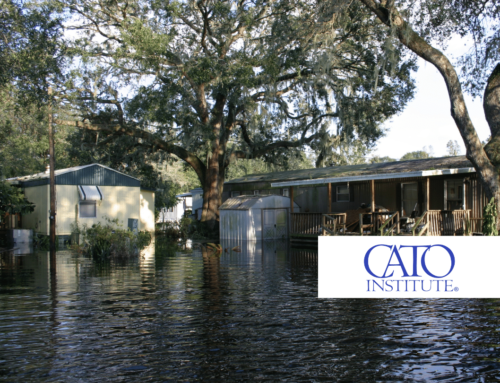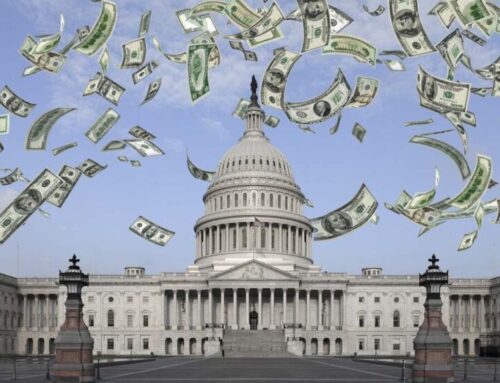The federal government provides funding to states and localities for a variety of transportation projects. This includes work on the National Highway System (NHS), bridge projects on any public road, transit capital projects, and bus terminals and facilities. The primary source of revenue is the Highway Trust Fund (HTF), created by the Federal-Aid Highway Act of 1956 to fund the interstate highway system and other federal-aid highway programs.
This system worked well for decades, but the HTF and the entire user-based system faces challenges, including the fixed federal fuel tax rates that have not been adjusted for inflation since 1993, and the rise of more fuel-efficient and electric vehicles, which contribute less to fuel tax revenues. These issues have led to recurring shortfalls in the HTF, which have been addressed through transfers from the general fund.
While these transfers have helped to bolster the resources in the HTF in the short term, they do not represent a sustainable solution. They do not generate new federal revenues and are simply short-term fixes. Therefore, it is crucial to explore innovative ways to maintain and enhance the user-based system, such as adjusting the federal fuel taxes and/or implementing user fees based on miles traveled.
User-Pays Principle
The Federal Aid Road Act of 1916 marked the beginning of the ongoing federal involvement in road construction, introducing a funding formula based on land area, population, and postal road mileage. This formula evolved over time, reflecting the changing needs of the nation. The 1921 Federal Highway Act set a precedent for the modern federal highway program, and the Federal-Aid Highway Act of 1944 initiated a transition from primarily rural road construction to a more diverse highway system.
The user-pays principle emerged prominently in the early 20th century, with the explosion of automobile ownership leading to the implementation of gas taxes. The HTF, which is primarily funded through federal fuel taxes, became instrumental in developing and maintaining the Interstate Highway System.
For several decades, the user-pays system was highly effective, with the fuel tax providing a steady revenue stream that facilitated extensive road construction and maintenance. However, by the late 20th and early 21st centuries, this system began to show signs of strain. Factors such as increased fuel efficiency, the rise of electric vehicles, and inflation eroding the purchasing power of fixed per-gallon tax rates have contributed to the HTF’s declining solvency.
Highway Trust Fund (HTF)
The HTF has evolved into a broader mechanism for funding a range of federal transportation projects, including highways and mass transit systems. It is primarily funded through federal excise taxes on motor fuels, trucks and trailers, truck tires, and taxes on the use of certain vehicles. The most significant portion of the revenue comes from the federal gasoline tax, which has been fixed at 18.4 cents per gallon for gasoline and 24.4 cents per gallon for diesel since 1993. Other sources include taxes on tires and heavy vehicles such as trucks.
The HTF consists of two main accounts:
- The Highway Account: This account is largely devoted to the construction and maintenance of highways and bridges.
- The Mass Transit Account: This account is used for capital expenditures on buses, railways, subways, ferries, and other modes of mass transit.
The HTF has faced recurring funding shortfalls due to an imbalance between revenues and outlays. Because the federal fuel taxes have not been increased since 1993, and they are not indexed to inflation, and improvements in vehicle fuel efficiency and the rise of electric vehicles have contributed to a decline in fuel tax revenues. To address these shortfalls, Congress has authorized transfers from the general fund to the HTF. Since 2008, these transfers have totaled $275 billion, including $118 billion authorized in the Infrastructure Investment and Jobs Act (IIJA) in 2021.
Possible Funding Mechanisms
The HTF is projected to face increasing shortfalls. The Congressional Budget Office (CBO) estimates that by 2030, outlays from the HTF will exceed reserves by a cumulative $134 billion, even if expiring trust fund taxes are extended. The CBO also projects that revenues and interest credited to the HTF will be insufficient to cover spending from the respective accounts starting in 2028. What’s more, the current state of federal surface infrastructure is deteriorating, with a need for significant investment in repair and modernization.
To address the current problems with the federal surface transportation program, Congress could consider several actions: increasing the federal gas tax or finding other revenue sources to ensure the solvency of the HTF; investing in new technologies and infrastructure to modernize the transportation system; and continuing to pass comprehensive, multi-year transportation acts to provide stable and predictable funding for surface transportation projects. Or some combination of changes.
In our 2019 Repair Priorities report with Transportation for America, we laid out several common sense priorities for getting America’s transportation in good shape, both physically and fiscally. These priorities included guaranteeing measurable outcomes for taxpayers, a repair first requirement, requiring that states prove that they can afford new infrastructure maintenance before approving new projects, and increased transparency and requirements for the FHWA to publish project results. Implementing these strategies would promote fiscal resilience and transparency, rather than applying a financial bandage every few years.
The user-pays paradigm in U.S. transportation funding has reached a critical juncture. With the Highway Trust Fund’s declining solvency and evolving transportation technologies and habits, policymakers must consider the implications of each funding mechanism for equity, efficiency, and political viability. The debate will be about whether to retain, reform, or replace the user-pays model underpinning the HTF. Some options include the following:
- Fuel Taxes and Vehicle Taxes: Fuel taxes have been a traditional method for funding road infrastructure, as seen in countries like the United States and Canada. They are relatively easy to administer and directly link road use to payment. However, the efficiency of fuel taxes is waning due to the advent of fuel-efficient and electric vehicles, which do not contribute to fuel tax revenues in proportion to their road usage.
- Toll Systems: Countries such as France, Japan, and China utilize toll systems, which can efficiently link usage to payment and adjust to reflect actual infrastructure costs. Toll systems can also manage congestion through variable tolling. Despite their benefits, toll systems can be costly to administer and may create congestion, although advancements in electronic toll collection have alleviated some of these issues.
- Distance-Based Charges: Germany has implemented truck tolls based on the distance traveled, and Oregon in the United States has piloted a Vehicle Miles Traveled (VMT) program. These systems can more accurately reflect road usage and impact, and they can be adjusted for vehicle type, weight, and emissions. However, they can be complex to administer and raise privacy concerns.
- Congestion Pricing: Cities such as Singapore and London are known for their congestion pricing systems, which are highly efficient in managing traffic flows and reducing congestion. They encourage the use of public transportation and off-peak travel. However, implementing such a system requires significant technological infrastructure and can be politically challenging, as American cities such as New York City are currently discovering.
- General Taxation: The United Kingdom funds highways through general taxation, which simplifies the process and spreads the cost across the entire population. This method is administratively efficient but less equitable, as it does not directly link usage to payment, potentially leading to overuse and congestion.
- Public-Private Partnerships (PPPs): PPPs have become more common in both developed and developing countries, leveraging private capital and expertise for infrastructure development and maintenance. They can accelerate project delivery and innovation but may result in higher long-term costs and issues with accountability and transparency. Furthermore, setting up appropriate and realistic guardrails and revenue projections is key as several of these PPPs in the U.S. have failed, shifting costs onto taxpayers.
Maintaining User-Pays Principle
The HTF was established as a user-supported system, where those who use the highways contribute to their maintenance and development through taxes. This principle aligns with the idea that those who benefit from a service should pay for it, and it should be preserved.
Transitioning the HTF to rely solely on appropriations from the general fund would fundamentally alter this user-pay/user-benefit principle. It would mean that highway funding would have to compete with other federal programs for resources each year, potentially affecting the level of funding provided for transportation. Maintaining a user-based system for the HTF also has practical benefits, as it provides a steady source of funding designated for investment in and maintenance of essential infrastructure, while user fees, such as fuel taxes, can help to reduce congestion and pollution.
While the HTF faces significant financial challenges, rejecting the user-pay/user-benefit principle that has underpinned the HTF since its inception would be a mistake. Instead, Congress should focus on reforming and enhancing the user-based system linking usage to payment to ensure the HTF’s long-term sustainability and effectiveness.











Get Social